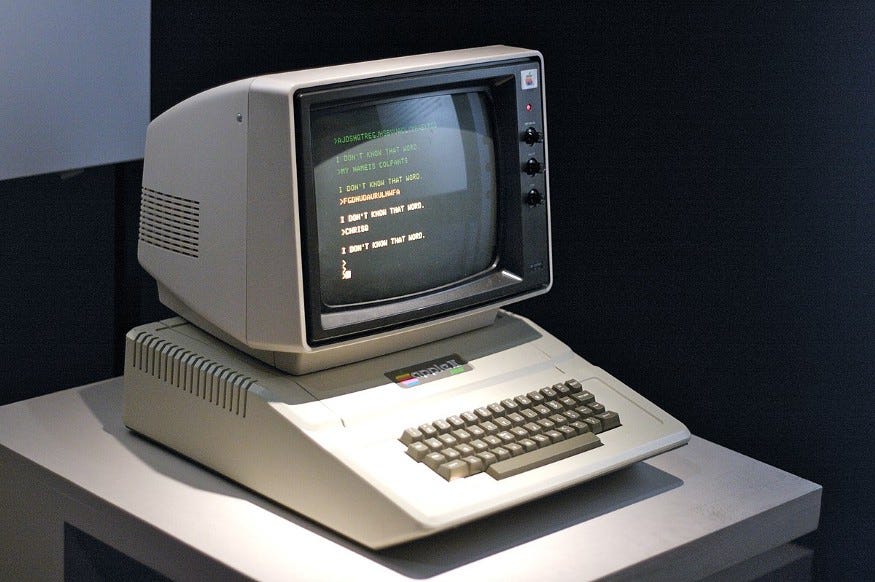Would you be able to handwrite 800 pages using a pen?
mar 13 2023By Marcos Chiquetto

The first big job that came in to our Brazilian translation agency, back in the 1980s, was the English-to-Portuguese translation of the manuals for a database software package: a massive document with 800 pages.
Back then, almost forty years ago, translators were professionals from the humanities area, who rarely owned computers. For that particular job, our translator received the original in printed form and wrote out the translation using a pen.
Afterwards, a computer professional typed everything into an Apple II (Grandfather of the Mac).

The typed text then underwent a technical review by a software specialist. Afterwards, a graphic arts professional prepared it by adding formatting parameters, and the file went to a phototypesetting bureau, which generated the pages on a roll of photographic paper.
− Why not use DTP software? It would be much simpler!
Because DTP (Desktop Publishing) simply didn´t exist at that time. There was no resource to work with graphic art on a desktop. An expensive phototypesetting system was required to format text.
The next step: the material on photographic paper was manually proofread to spot typos and formatting errors.
Based on the proofreading markup, the text file was corrected, and the altered pages were output again for another proofreading. This process was repeated until the manual was error-free.
Then the manual had to be printed. For that purpose, the material on photographic paper was sent to a print shop which, at that time, was starting to work with industrial photocopiers.
At the print shop, the manual was copied from the photographic paper to A4-size sulfite paper sheets. Then, the pages were trimmed to the correct page size with an industrial paper cutter, holes were punched in them for mounting in a binder, and everything was packed into shrink-wrapped packages.
The manuals were then delivered to the happy purchasers of the software with attractive plastic binder covers to hold the pages.
− And how long did all of this take?
The entire process took six months.
− What?? Six months to translate a software manual? You’ve got to be kidding!!
That’s right. It is unbelievable. Nowadays, the life of a software product can be on the order of months. If the translation process were to take six months, the translated material would probably be outdated by the time it was ready. The process can’t take that long.
− And how is this process executed nowadays?
Taking the previous example, 800 pages contain somewhere around 400 thousand words of text. An acceptable turnaround time for this translation would be 40 days.
Today, we would not receive a printed original, but an electronic file, already formatted by some formatting software, which could be MSWord or a DTP tool, such as Indesign.
Here are the steps that are taken:
First, the files are imported into a translation memory tool (see our article on translation memory).
In our example, let’s suppose that repetitions and material coming from the translation memory add up to 40% of the text, decreasing the actual translation volume to 240 thousand words.
At this point, the decision is made, together with the client, on whether machine translation is to be used. If the decision is that it will be used, the material undergoes machine translation, generating a set of pre-translated files.
With a total of 40 days available, we can schedule 30 days for the translation step. To translate this volume in 30 days starting from machine translation, we need two translators.
As the translation of each chapter is done, it is sent to a third translator for editing, that is, revision and standardization. By the end of the 30 days, the editor has already revised a large part of the material, needing only an additional week to finish everything. Thus, in five weeks, the final translated text is available.
We now have 5 days left to meet the scheduled turnaround time.
− But you still have the formatting and printing steps!
Well, here comes the best part: everything was done in a formatted file, whose visual features were preserved by the software tools. The translated text comes out entirely formatted. All we need to do is to review the pages to correct any errors introduced by the translators and to adapt the pages to the new language.
And last but not least, there is nothing to print: the document is delivered as a PDF (see our article on PDFs), so we just have to output the PDF when everything is ready.
That’s it. In 40 days, the manual is translated, formatted, and delivered.
A considerable improvement compared to the 6-month turnaround time!

Marcos Chiquetto is an engineer, Physics teacher, translator, and writer. He is the director of LatinLanguages, a Brazilian translation agency specialized in providing multilingual companies with translation into Portuguese and Spanish.




